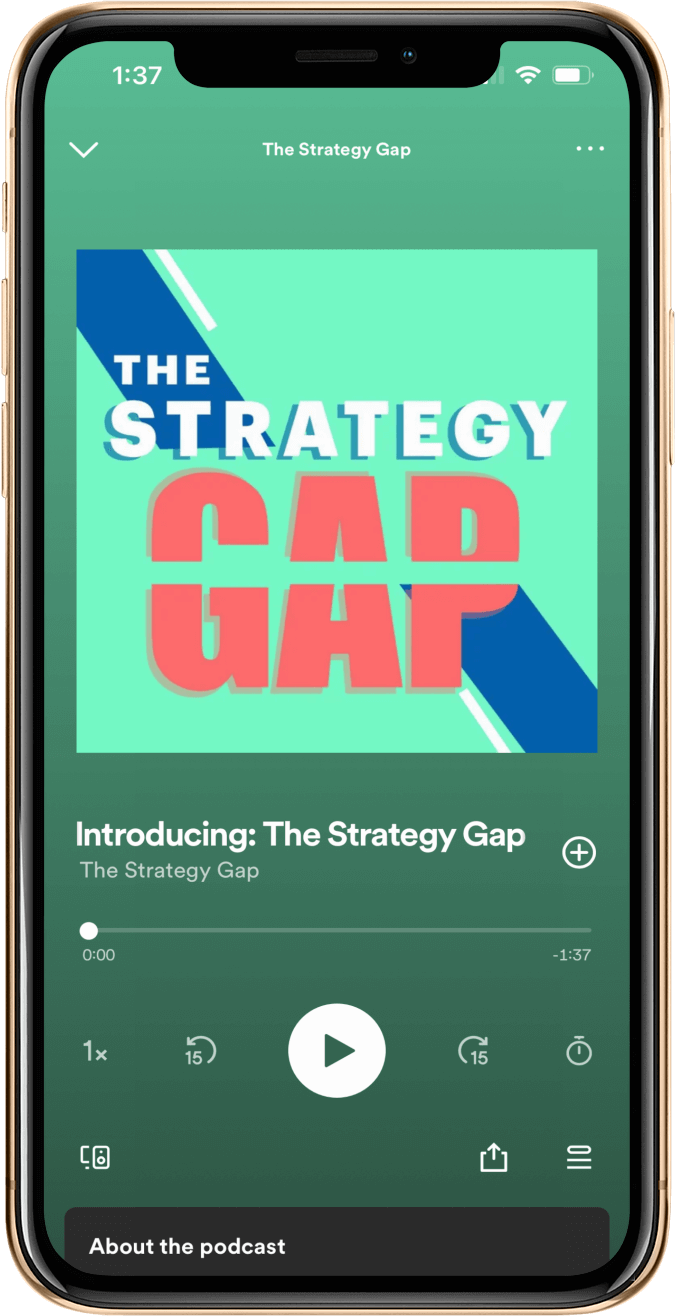Formerly, strategy was a siloed term utilized for bits and pieces of commercials, products, and initiatives. Today, strategy is immersed in every function of business, from brand strategy to product strategy to business strategy. Effective strategy today requires having the right people in the right rooms to create ideas that create a meaningful impact.
With this heightened importance placed on strategy comes a heightened level of complexity. The days of having a single person behind strategic functions are gone. Now, there must be synergy between teams and consistent work towards overall goals.
Michael Olaye, SVP and Managing Director of Strategy and Innovation at R/GA understands many organizations are hitting a brick wall when it comes to setting strategic directions and executing their goals successfully. Michael shares his deep insights into approaching strategy in a way that will win in today’s world.
Internal vs. external approaches to strategy
When discussing strategy, companies are faced with the decision of setting a trajectory in place through an in-house approach or by seeking external guidance through an agency. Michael explains there are several factors to consider when making this decision.
Finding (and retaining) the right talent
Some highly sought-after talent, such as User Experience Design professionals, prefer seeking employment from agencies instead of in-house roles. This is simply because some of the best in the field enjoy the freedom of having a variety of work instead of being tied to one product or brand.
This means companies may be able to hire top talent to fill these roles, but retaining them for more than a year or two is extremely challenging. Agencies can serve to keep those roles filled with the best talent, consistently.
The need for autonomy in decision-making
Especially with new companies, leaders want to keep most of the decision-making in-house to set the course of their company the way they envision it. Strong agency relationships will allow leaders to guide the way, while offering support through building roadmaps, ensuring team members are in the best-fit positions, building communication channels, and more.
Collaborating with external advisors
When innovating brand offerings, Michael explains that failure is commonly caused by the lack of the right research.
If a shoe company decides to expand its brand into offering clothing, there is a plethora of data available from successful ventures of the same type. However, this company must look into past failures and gauge the current state of its own organization before jumping into a launch in a new area.
Changing or adapting strategy to the current trends can be risky, but it can be equally necessary for survival.
“A good example is banks. They build a service, there are a lot of middlemen, and they make a lot of money from consumers. However, when FinTechs started rising, who were able to remove all of the processes and be almost instant in serving clients, banks didn’t sit there and ignore the prospect,” Michael says. “They looked at what FinTechs were doing and adopted some of it. Over the last 10 years, we’ve seen a lot of banks bring a lot of FinTech people into their business, give them good positions and allow them to have strategic influence in the organization.”
Many brands in industries such as clothing, automobiles, and mobility, typically sit still and take a long time to embrace innovation. Due to the amount of resources they dedicate to facilities, hardware, and training, pivoting cannot happen quickly.
In these industries, in particular, it is crucial to embrace strategy when looking into new markets.
Bringing users into the strategic development process
One key component of successful strategic development is knowing your customers, understanding them and including them in the process itself.
For example, Michael discusses BMW’s past advertising. After 10 years of excessive spending to create advertisements that showcased the speed, sound, and visual attractiveness of their cars, BMW found themselves still losing to companies like Kia.
BMW found that when buying a used car, the decision makers were predominately women, not the men they were previously marketing to. When buying a used car, marketing that catches the attention of women is key, as they are more than likely to be the ones who will be signing on the dotted line at the end of the day.
Michael explains that bringing current and desired customers into the process is critical for success.
“Thinking about traditional advertising, there was a process in the middle where you bring potential viewers who you want to love the brand and existing people will love the brand and you show them prequels of the commercial, just so you get that feedback,” Michael says.
It’s essential to talk to consumers, take feedback and implement while planning your strategy around multiple iterations.
Interested in learning more? Listen to our full discussion with Michael, where we further discuss partnerships, smaller companies and their impact on industry giants, how AI is changing the world of strategic development, and more. Listen on Apple Podcasts, Spotify, or your favorite podcast player.
Listen to The Strategy Gap
A podcast about the space between savvy strategy and practical execution, including everything that can go wrong on the way.




